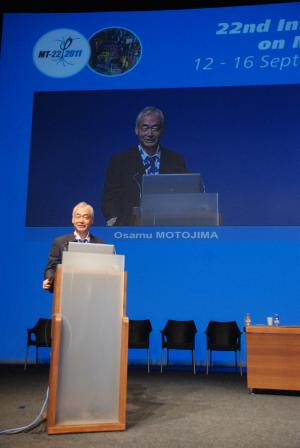In magnets, ITER now leads the way
It was with great pleasure that this year—the very year during which we celebrate the 100th anniversary of the discovery of superconductivity by Dutch physicist Kamerlingh Onnes— the ITER Organization was able to welcome the International Magnet Technology (MT) Conference to Marseille.
In the four decades since the MT conference began, there have been enormous gains in both the performance and applications of permanent, resistive, pulsed, hybrid and superconducting magnets. ITER now leads the way by building the largest and most powerful set of magnets ever seen and therefore I think the ITER Organization was a very fitting host.
The MT conference is the biggest international forum for magnet technology. This is where scientists and engineers present their latest research results and interact directly with companies working on the industrialization of these discoveries. With 935 participants, amongst them the world's foremost experts on the various magnet applications, this 22nd edition of the MT conference received more attention than any previous edition.
The high number of participants reflects not only the unwaning interest in the development of ever more powerful magnets and new materials for the non-invasive examination of the human body and high-energy particle physics, but also the steady rise of commercial activity.
In 1961, the first commercial NbTi superconductor was produced by the US company Westinghouse. The arrival of the first practical superconductors coincided to within a decade with the first successes in the magnetic confinement of plasmas. It was quickly obvious that for fusion reactors, superconductivity was going to be indispensible.
Today—100 years after the discovery of superconductivity and 50 years after the first commercial applications—we have arrived at the construction of the ITER magnets, which will require 450 tonnes of Nb3Sn strand and 250 tonnes of NbTi strand. The dimensions of the ITER magnets are approximately two orders of magnitude larger than those of the first superconducting device in 1965. ITER will also make use of the latest high temperature superconductors as part of the current leads that pass current to the coils.
Download the text of the opening speech here.


